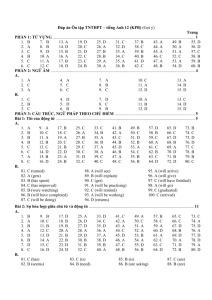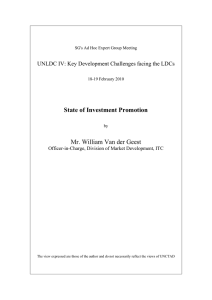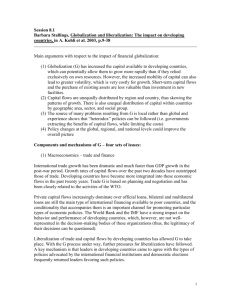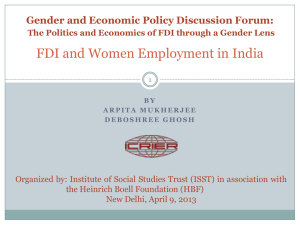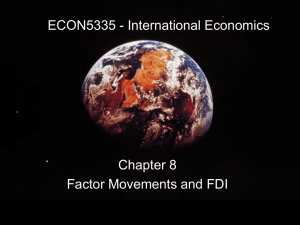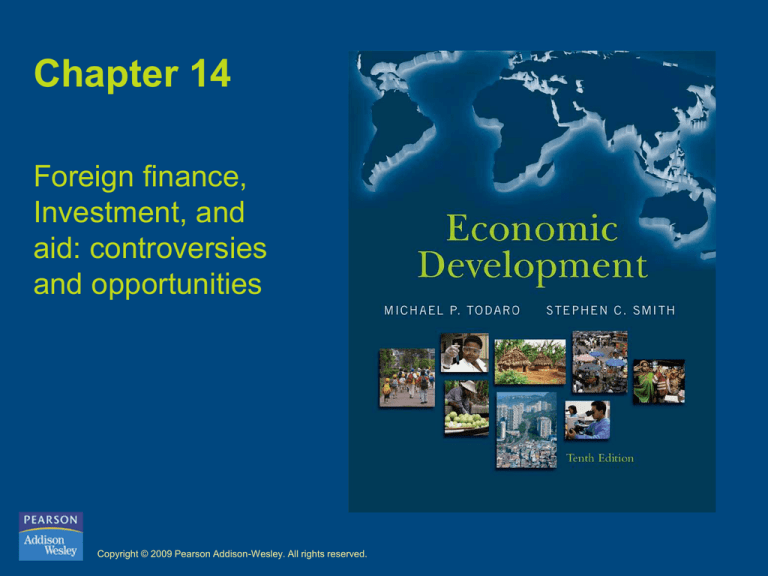
Chapter 14
Foreign finance,
Investment, and
aid: controversies
and opportunities
Copyright © 2009 Pearson Addison-Wesley. All rights reserved.
The international flow of financial
resources.
• A country’s international situation and its balance of payments depends
not only on its current account balance (trade), but also on its balance
of capital account (net inflow or outflow of financial resources).
• In this chapter we examine the international flow of financial resources.
14-2
The international flow of financial
resources.
Three sources:
• Private foreign direct and portfolio investment.
-Foreign direct investment (FDI) by large multinational corporations
-Foreign portfolio investment in LDC financial markets by private
sector.
• Remittances of earnings by international migrants.
• Public and private development assistance (foreign aid).
14-3
Private Foreign Direct Investment and the
Multinational Corporation (MNC).
Definition:
• A MNC is an enterprise that conducts and controls productive
activities in more than one country (i.e. Nike, Toyota, etc.).
• The growth of private foreign direct investment (FDI) in the
developing world has been extremely rapid in recent decades.
– 1962: $2.4 billion
– 1990: $35 billion
– 2002: $147 billion
• Global FDI trends are largely determined by:
Expected returns.
Perceived safety.
14-4
Figure 14.1: FDI Inflows (1980–2005)
14-5
Figure 14.3: Total net resource flows to
developing countries (1990-2005)
14-6
Private Foreign Direct Investment and the
multinational corporation
MNCs:
• Transfer of not only capital, but also know-how, tastes and
preferences, business practices, etc.
• Size: very large.
$150 billion in sales in 2004.
More in sales revenues than combined income of sub-Saharan Africa in
2004
• Ownership: concentrated in the developed economies.
General Electric, Ford, Wal-Mart in US.
France Telecom, Nestle in France.
Honda, Toyota, Sony in Japan.
Deutsche Telekom, Volkswagen in Germany.
14-7
Private Foreign Investment: pros and
cons for development.
Traditional argument in support of FDI:
FDI helps fill in the gap between domestically available supplies of:
(1) Savings.
(2) Foreign exchange reserves.
(3) Government tax revenues.
(4) Management / human skills.
14-8
Private Foreign Investment: pros and
cons for development.
Economic argument against FDI:
• FDI may lower domestic savings rate (thus investment) by:
– Limiting domestic competition via exclusive agreements.
– Failing to reinvest much of profits in local economies.
– Generating incomes for groups with lower propensity to save (i.e.
rich in LDCs)
• FDI may reduce foreign exchange earnings by:
– Repatriation of earnings (i.e. profits, interests, loyalties,
management fees, etc.) worsen the capital account in the long run.
14-9
Private Foreign Investment: pros and
cons for development.
Economic argument against FDI:
• Net return to host LDC may be low due to large economic and
political concessions.
– Excessive protection
– Tax rebates or investment allowances
– Cheap provision of factory sites and utilities
• MNCs can avoid (minimize) local taxation through transfer pricing
– Shifting profits from affiliates in high-tax countries to those in lowtax countries.
Copyright © 2009 Pearson Addison-Wesley. All rights reserved.
14-10
Private portfolio investment: boon or bane
for LDCs?
• In addition to FDI, the most significant component of private
capital flows has been in the area of portfolio investments.
• What is portfolio investment?
– Foreign purchase of the stocks (equity), bonds,
certificates of deposit, and commercial papers of LDCs
• Emerging-country stock markets.
– High returns
– But also high volatility
– Exchange rate (depreciation) risk
14-11
The international flow of financial
resources.
Three main sources:
• Private foreign direct and portfolio investment.
• Remittances of earnings by international migrants.
• Public and private development assistance (foreign aid).
14-12
The role and growth of remittances
Definition:
• Earned income transferred by international migrants from host to
home country.
Reason for international labor mobility.
• Wage level differences between LDCs and MDCs.
14-13
Figure 14.4: resource flows to developing
countries (1990-2005).
14-14
The role and Growth of Remittances
Reason behind rising trend:
• Improved accounting of remittance flows.
• Rising number of migrants.
• Reduction in transaction costs.
14-15
Figure 14.5: top 20 remittance recipient
countries (2004)
14-16
Foreign Aid: The development assistance
debate
Definition:
Any flow of capital to LDCs that meets the following criteria:
• Its objective should be non-commercial from the viewpoint of the donor.
• It should be characterized by concessional terms; i.e. interest rate and
repayment period should be softer than commercial loans.
14-17
Foreign Aid: The development
assistance debate
Amounts and Allocations:
Official development assistance includes:
- Bilateral and multilateral grants (i.e. direct transfers).
- Loans (i.e. IMF loans).
- Technical support (i.e. assistance in policy related areas).
14-18
Table 14.2: Official Development Assistance
(ODA) disbursements from major donor
countries, 1985, 2002, and 2005.
14-19
Table 14.3: Official Development
Assistance (ODA) by region (2005).
14-20
Foreign Aid: The development assistance
debate
Why donors give aid?
Political Motivations:
•
•
Most aid programs focus on:
–
Ensuring national security
–
Keeping friendly governments in power
U.S. used Marshall Plan to reconstruct Western European
economies after WW2 to contain the spread of communism.
14-21
Foreign Aid: The development assistance
debate.
Why donors give aid?
Economic Motivations:
•
Donor countries tend to direct aid to economies where they have
large private investments.
•
Expansion of trade.
–
Trade follows aid: aid is spent on goods and services from the
donor country (i.e. Japan, U.K.)
14-22
Foreign Aid: The development assistance
debate.
Why LDC recipients accept aid?
Economic reasons:
•
Aid is an essential ingredient to the development process:
–
Supplements scarce domestic resources
–
Helps transform the economy structurally.
–
Contributes to faster economic growth.
14-23
Foreign Aid: The development assistance
debate.
Why LDC recipients accept aid?
Political reasons:
•
Aid is seen as political leverage for incumbent to suppress
opposition.
•
Assistance includes transfer of not only financial resources but
also military and intelligence support domestic security
reinforcements.
14-24
Foreign Aid: The development assistance
debate.
Effects of Aid:
Traditionalists argue:
•
Aid promotes growth and structural transformation.
Critics say:
•
Aid delays economic growth by lowering domestic savings (thus
investments) and worsening LDC balance of payment deficits.
14-25
Conclusions: toward a new view of
foreign aid.
• Dissatisfaction among donors and recipients may create the
possibility for new aid arrangements.
• Future aid is likely to be linked to market reforms and institutional
capacity-building.
14-26



